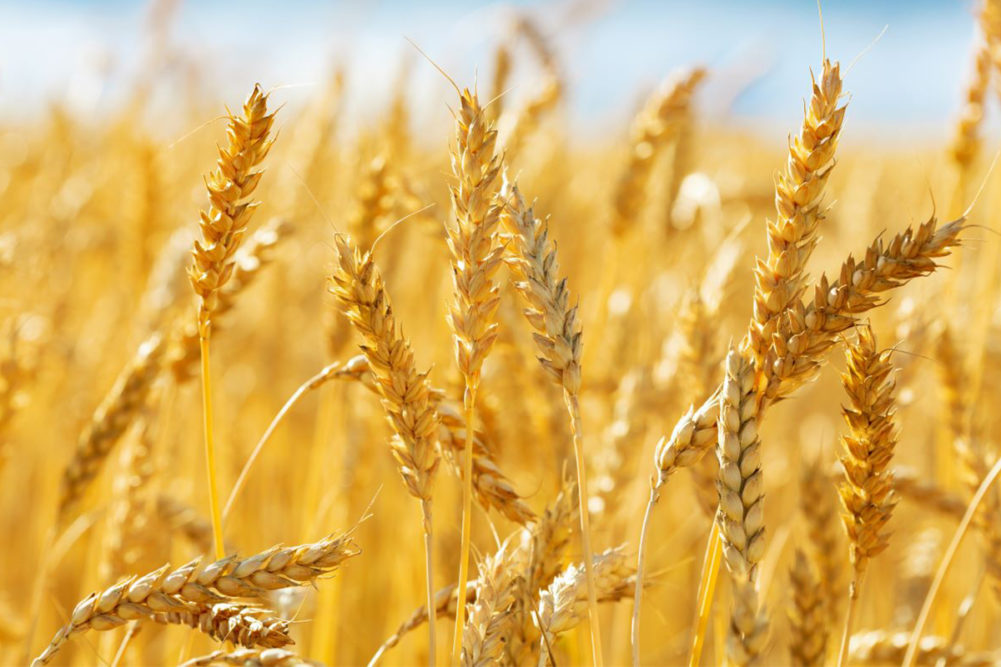WASHINGTON — Drought in the west continued to drag US winter wheat conditions lower, while the cool wet start to the season had spring wheat seeding remarkably behind normal pace, the US Department of Agriculture said in its May16 Crop Progress report.
In the 18 states that planted 89% of the crop in 2021, winter wheat in good to excellent condition on May 15 was 27%, easing from 29% a week earlier and compared with 48% a year earlier. A deeper look at the conditions by state indicated the soft winter wheat crop in the eastern United States was in far better shape than the hard winter wheat crop.
Good-to-excellent ratings in the key hard red winter wheat areas on May 15 were 24% in Kansas (28% a week earlier), 13% in Oklahoma
(20%), 5% in Texas (7%), 19% in Colorado (11%), 28% in Nebraska (33%), 24% in South Dakota (30%) and 11% in Montana (13%).
The worsening condition of the Kansas crop matched some of the early findings from scouts taking part in the 2022 Wheat Quality Council Hard Winter Wheat Tour, which kicked off early May 17. A video tweet from David Schemm, agriculture adviser to Kansas Senator Roger Marshall, showed a wheat field in central Kansas with decent stands, of very light green and sometimes yellow plants growing in ground so parched that crevices were visible between rows. Justin Gilpin, chief executive officer of Kansas Wheat, tweeted a photo of a field in Clay County in north-central Kansas with short wheat and evident drought stress that he estimated could yield 35 bus an acre come harvest. And Kansas State University agronomist Romulo Lollato tweeted two pictures highlighting the extent of the drought.
“Field in Clay County looking decent from the road but showing a lot of drought stress when you look closer, short, few heads, feet and bottom leaves dried out,” he said.
Other fields scouted during the opening morning of the tour appeared in better shape. US Wheat Associates tweeted a photo from Riley County, Kan., showing strong stands headed bright green wheat.
“Good moisture,” US Wheat said. “Estimated 54.7 bpa.”
Another scout displayed wheat from two fields due south of Abilene, Kan., and estimated yield at 77 to 78 bus an acre. But the overwhelming theme was dryness.
“Disappointing yields so far in North Central Kansas on #wheattour22 under 40 bpa in first 3 stops. Clear drought stress,” tweeted Aaron Harries of Kansas Wheat.
Meanwhile, in the Central states, soft winter wheat conditions were improving. The USDA said good-to-excellent crop conditions on May 15 were 65% in Missouri (63% a week earlier), 52% in Illinois (45%), 65% in Indiana (61%), 60% in Ohio (56%) and 49% in Michigan (45%).
And in the Upper Midwest and Northern Plains, spring wheat planting progress was a little over half the normal pace. The USDA said spring wheat in the six states that seeded 100% of the 2021 crop was 39% planted by May 15. It was good progress from 27% a week earlier but fell far short of 83% planted a year earlier and 67% as the 2017-21 average for the date. By state, seeding completion was 17% in North Dakota (8% a week earlier. 60% as the recent five-year average), 78% in South Dakota (63%, 84%), 5% in Minnesota (2%, 75%), 70% in Montana (50%, 66%), 85% in Idaho (72%, 88%) and 91% in Washington (86%, 91%).
The North Dakota Wheat Commission in a weekly update noted many of the state producer had yet to begin planting.
“Producers in North Dakota have been able to make some planting progress in recent days after warmer temperatures over the weekend and windy conditions that helped dry soils,” ND Wheat said. “Precipitation over the last week ranged from around an inch to 4 to 5 inches or more in isolated areas.





